Did you know that colors have the power to influence our thoughts, emotions, and perceptions? It’s true! Color psychology is a fascinating field that explores the impact of different hues on our mental and emotional states. From the moment we wake up and choose our outfit for the day to the way we interpret advertisements and interact with our environment, colors play a significant role in shaping our daily experiences.
In this article, we will delve into the intriguing world of color psychology and uncover the profound effects that colors have on our lives. We will explore how our perception of color shapes our interpretation and response, the strong emotional associations tied to different hues, and how businesses and marketers leverage color psychology to influence consumer behavior. Additionally, we will discuss the impact of color choices in interior design, the cultural and symbolic meanings associated with colors, and even the potential benefits of color therapy on our well-being.
Get ready to unlock the secrets of color psychology and discover how colors can shape our thoughts, feelings, and decision-making processes in ways we may have never imagined.
Understanding Color Psychology
Color psychology is an intriguing field that explores how colors can influence our mental and emotional states. By understanding the theories and principles behind color psychology, we can harness the power of colors to create impactful experiences in various contexts, such as marketing, branding, and interior design.
Colors have the ability to evoke specific emotions and shape our perceptions. They can influence our mood, behavior, and even decision-making processes. For example, warm colors like red and orange are often associated with energy and excitement, while cool colors like blue and green are often linked to calmness and relaxation.
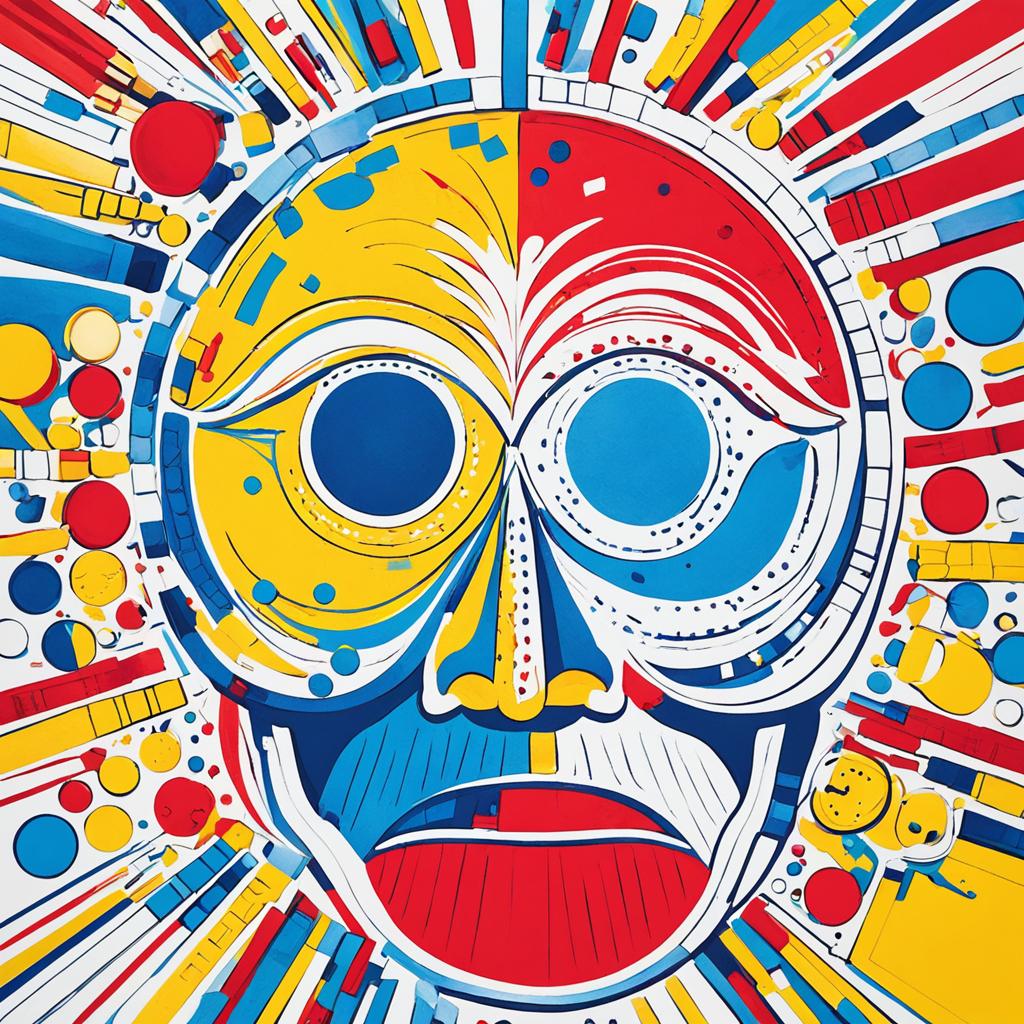

“Colors, like features, follow the changes of emotions.” – Pablo Picasso
Color psychology is not only limited to individual preferences; it also encompasses cultural and societal influences. Different cultures may associate specific meanings and symbols with colors, which can impact how colors are perceived and used in different regions of the world.
The Influences of Color in Marketing
In the realm of marketing, color plays a vital role in capturing attention, conveying messages, and influencing consumer behavior. Brands carefully select colors for their logos, packaging, and advertisements to evoke specific emotions and create memorable experiences. For example, the color red is often used to promote urgency or excitement, while the color blue is associated with trust and dependability.
The Impact of Color in Interior Design
In interior design, color choices can significantly impact the atmosphere and functionality of a space. Warm colors can make a room feel cozier and more inviting, while cool colors can create a sense of serenity. Understanding color psychology is crucial in creating harmonious and aesthetically pleasing environments.
By delving deeper into the theories and principles of color psychology, we can unlock the potential of colors to enhance our daily lives. Whether it’s choosing the right color for a logo, creating a relaxing bedroom, or even incorporating colors into our personal fashion choices, color psychology offers valuable insights into how we can leverage colors to evoke the desired emotions and create meaningful experiences.
The Role of Perception in Color Psychology
Our perception of color plays a crucial role in how we interpret and respond to different hues. The way we see and experience colors is influenced by various factors, including our cultural background, personal experiences, and visual stimuli.
When it comes to color psychology, perception refers to the way our brains process and make sense of the colors we see. It is not just about the physical characteristics of colors, but also about how our minds perceive and assign meaning to them.
A key aspect of perception is the concept of color consistency. This refers to our ability to recognize and identify colors across different contexts and lighting conditions. For example, we can still perceive a red apple as red whether we see it in bright daylight or under artificial lighting.
However, it’s important to note that perception of color can vary from person to person. The way we perceive colors is not solely determined by the physical properties of light and pigments, but also by our individual sensitivity, interpretation, and associations.
Cultural background plays a significant role in shaping our perception of colors. Different cultures have distinct color symbolism and meanings, which can influence how individuals perceive and interpret certain hues. For example, while white is associated with purity and innocence in Western cultures, it is associated with mourning in some Eastern cultures.
Personal experiences also have a profound impact on our perception of colors. Positive or negative associations with specific colors can alter how we emotionally respond to them. For instance, someone who had a negative experience involving the color red may perceive it as threatening or unsettling.
Additionally, visual stimuli can affect our perception of color. Surrounding colors, lighting conditions, and the presence of other objects can all influence how we perceive and interpret individual colors. Contrast, for example, plays a significant role in our perception of colors, as it can enhance or diminish their impact.
The Power of Perception in Color Psychology
The way we perceive colors can evoke specific emotions, shape our preferences, and even influence our behavior. Understanding the role of perception in color psychology allows us to harness the power of colors in various contexts, including marketing, design, and personal well-being.
By understanding the complex interplay between perception and color, we can effectively utilize color psychology to create desired emotional responses, enhance communication, and create visually appealing experiences.
To further illustrate the importance of perception in color psychology, consider the image below:
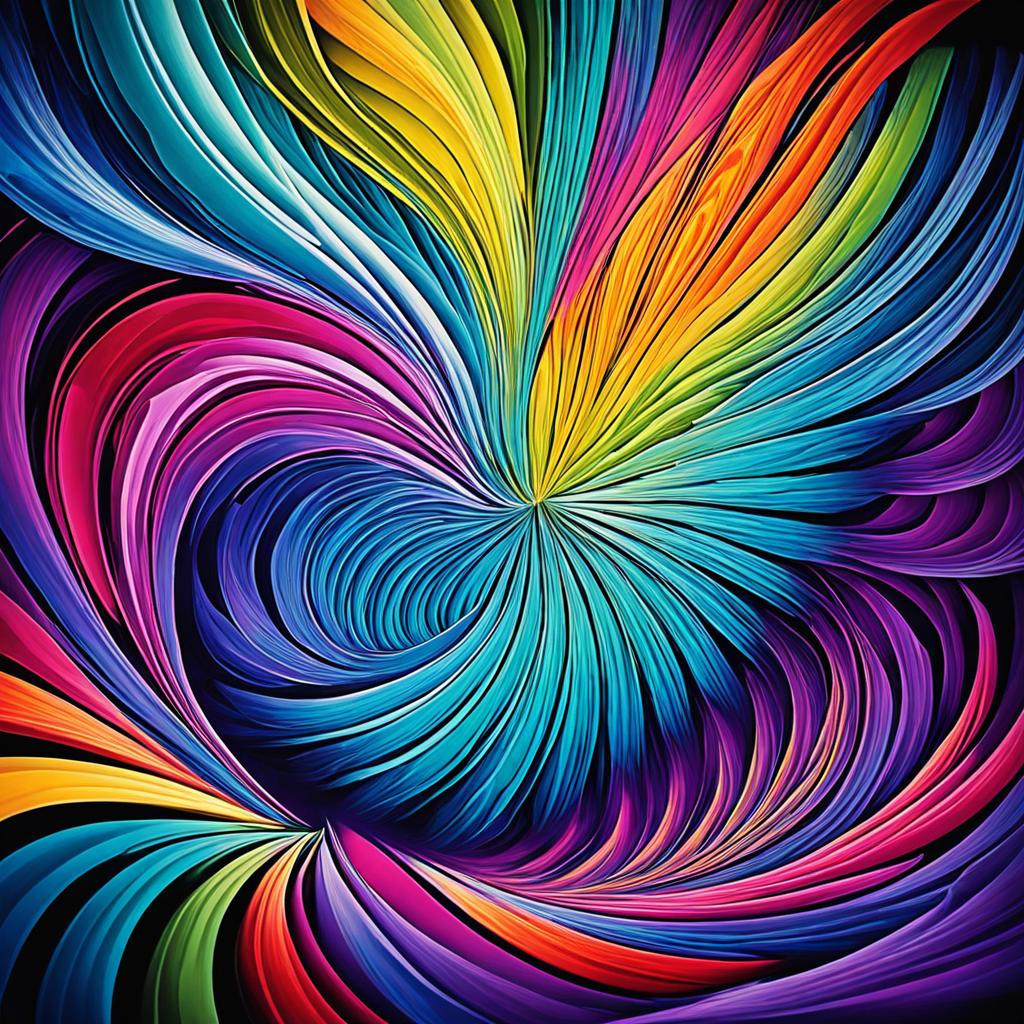

The image showcases an optical illusion known as the “checker shadow illusion.” Despite the two squares labeled A and B appearing to be different in color, they are actually the same shade of gray. This phenomenon highlights how our perception of colors can be influenced by contextual information, such as surrounding objects or shadows.
As we continue to explore the fascinating field of color psychology, we uncover the intricacies of perception and its impact on our understanding and experience of colors. By leveraging this knowledge, we can harness the power of colors to enhance our daily lives and create meaningful connections with the world around us.
Emotion and Color
Colors have a remarkable ability to evoke specific emotions and moods within us. The field of color psychology explores how different colors can elicit powerful emotional responses and influence our overall well-being. Understanding the psychological and physiological effects that colors have on individuals is key to harnessing the power of color in various contexts.
The Emotional Associations of Colors:
- Red: This vibrant color is often associated with passion, energy, and intensity. It can evoke feelings of excitement, courage, and even anger.
- Yellow: Radiating warmth and positivity, yellow is known for its association with happiness, optimism, and creativity. It can also stimulate mental activity.
- Blue: As the color of tranquility and calmness, blue elicits feelings of serenity, trust, and stability. It is often used to promote relaxation and a sense of security.
- Green: Symbolizing nature and growth, green inspires feelings of harmony, balance, and renewal. It is associated with a sense of freshness and vitality.
- Purple: This regal color is often associated with luxury, creativity, and spirituality. It can evoke a sense of mystery, enchantment, and elegance.
Physiological Effects of Colors:
Colors not only impact our emotions but also have physiological effects on our bodies. For example, studies have shown that shades of red can increase heart rate and stimulate appetite, while blues and greens can promote relaxation and lower blood pressure. These physical responses further highlight the connection between color and our overall well-being.
“Color is a power that directly influences the soul.” – Wassily Kandinsky
By understanding the emotional associations and physiological effects of colors, we can make informed choices in various areas of our lives. From the colors we wear to the colors we surround ourselves with in our environments, each hue has the potential to affect our emotions and enhance our experiences.
In the next section, we will explore the role of color psychology in marketing and how businesses leverage the emotional power of colors to influence consumer behavior.
The Power of Color in Marketing
Color psychology plays a significant role in marketing strategies, as it has the power to influence consumer behavior and shape perceptions. When used strategically, colors can evoke specific emotions, create brand recognition, and even influence purchase decisions. Let’s explore how businesses and marketers leverage color psychology to create impactful marketing campaigns.
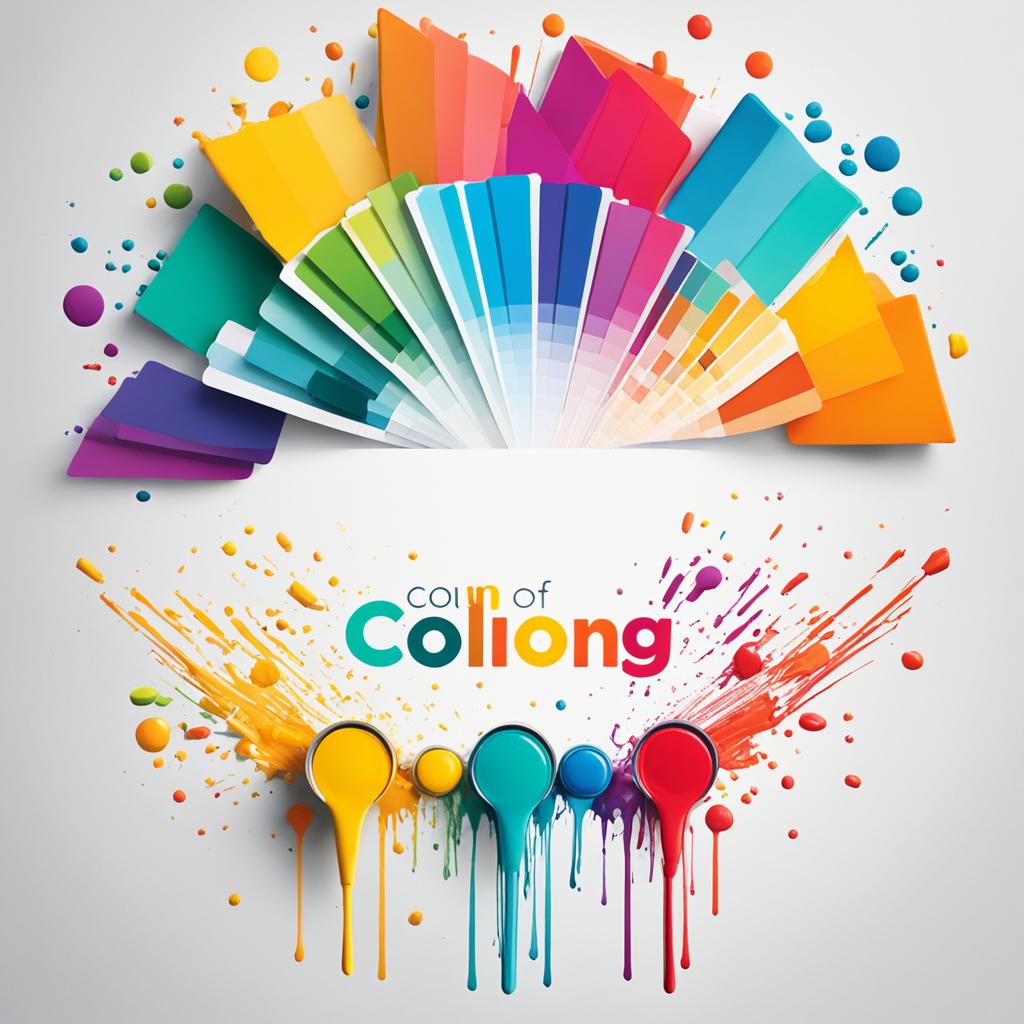

Color in Branding
When it comes to branding, color choices are crucial. Each color carries its own inherent meaning and can elicit certain emotions and associations. For example, red is often associated with energy, passion, and excitement, making it a popular choice for brands looking to create a sense of urgency or attract attention. On the other hand, blue is commonly associated with trust, reliability, and calmness, making it a popular choice for financial institutions.
By carefully selecting the right colors for their brand, businesses can effectively communicate their identity and values to their target audience, helping to establish a strong brand presence and build lasting connections.
Color in Packaging
Colors also play a crucial role in packaging design. The use of color can influence consumers’ perception of a product and even affect their purchasing decisions. Bright, bold colors often convey a sense of excitement and can attract attention on store shelves, while softer, more muted colors can evoke a feeling of elegance and sophistication.
Consider, for example, the packaging design of luxury perfumes. Brands like Chanel and Dior often use sleek, minimalist packaging in black or white to convey a sense of exclusivity and sophistication. These color choices create an emotional connection with consumers, influencing their perception of the product’s quality and value.
Color in Advertising
In advertising, colors are used strategically to capture attention, convey messages, and create associations with brands. Advertisements that use vibrant, eye-catching colors are more likely to capture viewers’ attention and leave a lasting impression.
For example, fast-food chains often use red and yellow in their advertising to stimulate appetite and create a sense of urgency. These colors are believed to trigger hunger and grab consumers’ attention, especially in a crowded advertising landscape.
“Color is a powerful tool in marketing. By understanding the psychological impact of different hues, businesses can effectively communicate their brand’s identity, evoke desired emotions, and attract their target audience.”
When it comes to color psychology in marketing, it’s important to consider cultural differences and individual preferences. What may be perceived as positive in one culture may have a different meaning in another. Additionally, personal experiences and associations with specific colors can vary among individuals. Therefore, it’s crucial for marketers to conduct thorough research and understand their target audience’s cultural background and preferences when utilizing color in their marketing campaigns.
By leveraging the power of color psychology in marketing, businesses can create a strong brand presence, influence consumer behavior, and ultimately drive success in a competitive marketplace.
The Influence of Color on Interior Design
Color psychology plays a significant role in interior design, impacting the ambiance and functionality of a space. The careful selection and implementation of colors can create specific atmospheres and evoke desired emotions within different rooms. Understanding the effects of color on the human mind and behavior allows designers to create harmonious and engaging spaces.
Each color has unique psychological effects that can influence our perception and mood. Here are some examples:
- Blue: Known for its calming effect, blue is often used in bedrooms and bathrooms to create a serene and peaceful atmosphere.
- Yellow: This vibrant color is associated with happiness and energy, making it suitable for kitchens and living rooms where socialization and creativity occur.
- Green: Green represents nature and harmony, making it an ideal choice for spaces in which relaxation and rejuvenation are desired, such as bedrooms or home offices.
- Red: Evoking excitement and passion, red is often utilized in dining areas or areas where social interaction and stimulation are desired.
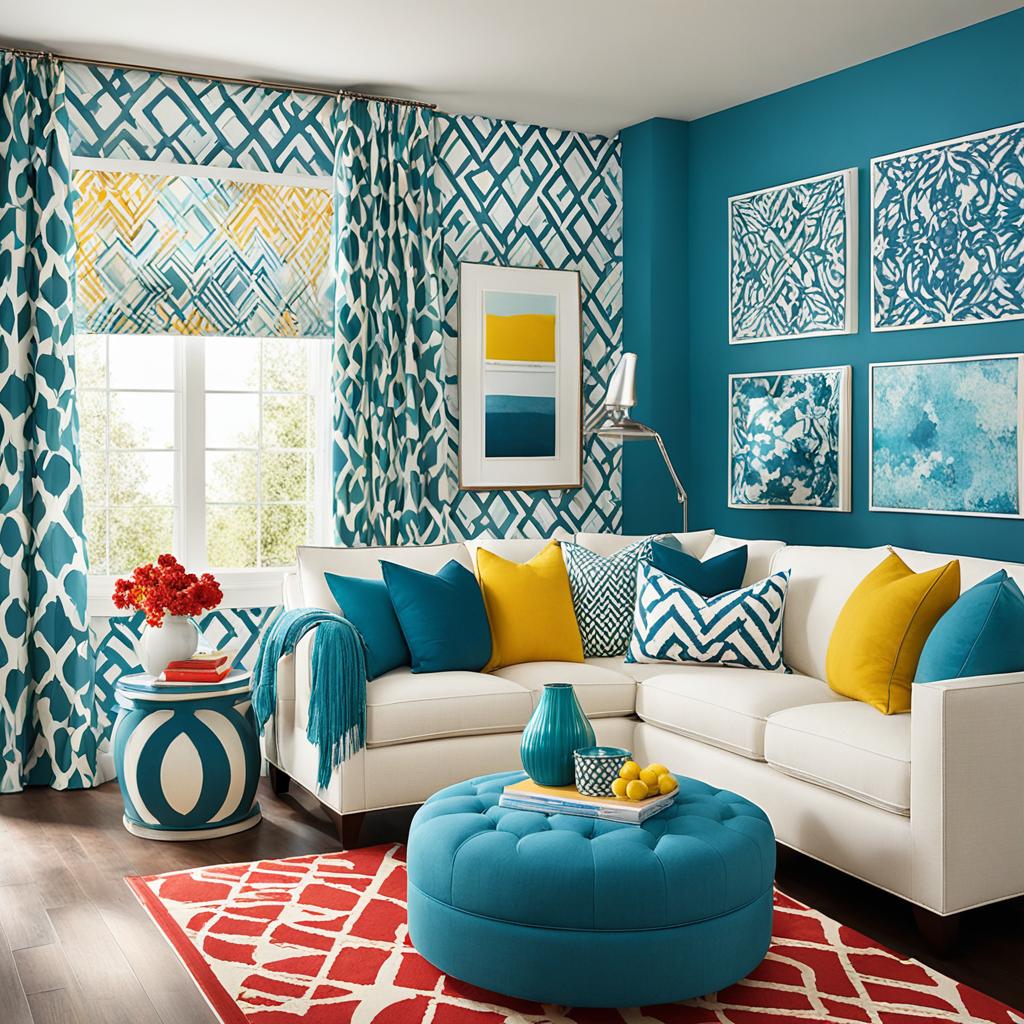

“The use of color in interior design allows designers to create spaces that cater to the specific needs and emotions of the occupants. By strategically selecting and combining colors, designers can transform a room into a personal sanctuary or a functional workspace that enhances productivity and well-being.”
Harnessing the power of color psychology also involves considering the size and lighting of a room. Darker colors can make a large room feel more intimate, while lighter colors can create an illusion of space in smaller rooms. Additionally, the intensity and saturation of colors can affect how they are perceived, with muted tones often contributing to a softer and more tranquil environment.
When choosing colors for interior design, it’s crucial to consider the purpose of the space and the emotions or atmosphere you want to achieve. By integrating color psychology into your design decisions, you can transform a room into a truly impactful and harmonious environment.
Cultural and Symbolic Meanings of Colors
This section explores the fascinating realm of cultural and symbolic meanings associated with different colors. Colors hold deep-rooted significance in various societies, representing a kaleidoscope of emotions, beliefs, and traditions. Understanding the cultural connotations of colors can help us navigate cross-cultural interactions and appreciate the layered richness of color psychology.
Colors carry diverse meanings across the globe, with cultural contexts shaping their symbolic significance. For instance:
- In Western cultures, the color red is often associated with passion, love, and power. It elicits strong emotions and is frequently used to symbolize energy and strength. In contrast, white is linked to purity, innocence, and peace.
- In Asian cultures, red is a symbol of good luck, happiness, and prosperity. It is a vital color during celebrations like Chinese New Year and weddings. Yellow, on the other hand, represents royalty, spirituality, and vitality. It is revered in many Asian cultures as the color of the emperor.
- In African cultures, the color green often signifies fertility, growth, and the lushness of nature. It is connected to the earth and represents life and prosperity. White can symbolize purity, spirituality, and the spiritual realm.
- In Native American cultures, the color blue is associated with spirituality, harmony, and healing. It represents the sky and the sacredness of nature. Yellow symbolizes wisdom, joy, and enlightenment.
These examples merely scratch the surface of the intricate interplay between colors and cultural meanings. It is worth noting that color symbolism can also vary within a particular culture or region, depending on historical, religious, and social factors.
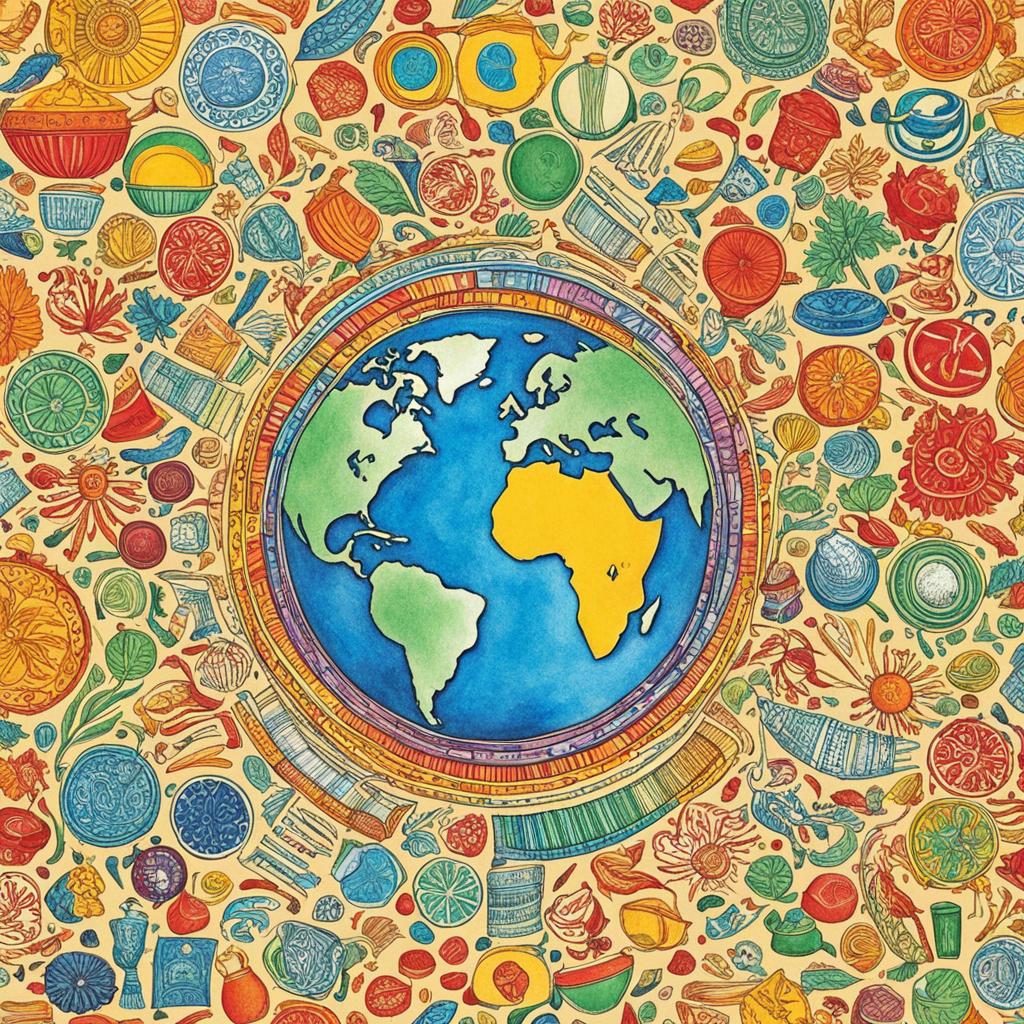

“Colors are the visual language of culture, encapsulating centuries of shared meanings and traditions,” says color psychologist Dr. Rebecca Ellis. “By understanding the cultural and symbolic significance of colors, we can gain deeper insights into the complex tapestry of human experiences.”
Color Symbolism in Art and Religion
Art and religion often intertwine color symbolism, harnessing the evocative power of hues. For instance, religious paintings throughout history have used particular colors to represent sacred figures or convey spiritual concepts. The iconic Sistine Chapel ceiling by Michelangelo prominently employs colors such as blue, red, and gold to depict biblical narratives and emphasize divine presence.
Similarly, various art movements and artists have employed colors to express emotions, ideas, and cultural commentary. The impressionist movement, spearheaded by Claude Monet, sought to capture the fleeting effects of light and atmosphere by experimenting with vibrant and unconventional color palettes.
Color symbolism in art and religion serves as a visual language, transcending linguistic barriers and touching deep chords within individuals.
Unlocking the Language of Color
“Colors hold immense power; they speak to our souls in ways words cannot. They evoke memories, shape identities, and invite us to experience the world through a nuanced lens of perception and meaning.”
Color psychology reveals that our perception of colors has profound effects on our thoughts, emotions, and actions. By acknowledging the cultural and symbolic meanings attributed to colors, we can cultivate greater empathy, understanding, and appreciation for the diverse perspectives that color carries across different cultures.
Color Preferences and Personal Associations
Color preferences are highly subjective and can vary greatly from person to person. Our individual experiences, cultural backgrounds, and personal associations play a significant role in shaping our preferences for certain colors. Understanding the psychology behind these preferences can provide valuable insights into our unique personalities and emotions.
Color psychology suggests that our preferences for specific colors may stem from a combination of biological and psychological factors. For example, certain colors may elicit positive emotions, such as happiness or calmness, based on personal associations related to past experiences or cultural symbolism.
Personal associations with colors can develop through various means. For some individuals, a color may hold sentimental value, reminding them of a cherished memory or a significant event in their lives. Others may associate colors with specific traits or characteristics. For instance, the color blue might be associated with tranquility and trust.
It’s important to note that personal color associations can also be influenced by external factors, such as societal trends or marketing strategies. Advertisements, branding, and media portrayal of colors can shape our perceptions and preferences over time.
By exploring our own color preferences and understanding the personal associations we have with different colors, we can gain insights into our own emotions and personalities. Additionally, recognizing the impact of color psychology in our daily lives can help us make informed decisions in areas such as home decor, fashion choices, and even personal relationships.
“Our color preferences are a window into our souls, revealing the unique tapestry of emotions and experiences that shape our perceptions of the world.”
When it comes to personal associations with colors, it’s important to remember that there are no fixed rules or universal meanings. While studies have explored general color associations, it’s ultimately up to each individual to determine their own personal connection with specific colors.
Color Therapy and Healing
In the world of color psychology, colors are not only seen as elements that evoke emotions or symbolize meanings. They are also believed to possess therapeutic properties that can promote healing and balance within individuals. Color therapy, also known as chromotherapy, is a holistic practice that utilizes specific colors to enhance emotional, mental, and physical well-being.
Color therapy is based on the idea that different colors carry distinct vibrations and energies that can have a profound impact on our moods, emotions, and overall health. Each color is associated with specific qualities and has the potential to stimulate or calm certain aspects of our being.
For example, warm colors such as red and orange are often used to boost energy levels and promote vitality. They are believed to activate the body and mind, increasing motivation and enthusiasm. On the other hand, cool colors like blue and green are known for their calming and soothing effects. They can help alleviate stress, anxiety, and promote relaxation.
In color therapy, practitioners use various techniques to introduce specific colors into a person’s environment or directly onto their body. This can be done through colored lights, visualization exercises, aura photography, and even wearing or surrounding oneself with particular colored objects or fabrics.
While color therapy is not recognized as a medical treatment, it is often used as a complementary therapy alongside conventional medicine to support overall health and well-being. The therapeutic use of colors can assist in balancing the body’s energy centers, known as chakras, and promote a sense of harmony and vitality.
“Color is the place where our brain and the universe meet.” – Paul Klee
Color therapy has gained popularity in various fields, including alternative medicine, holistic healing, and spa practices. It is believed to have a wide range of benefits, such as improving mood, reducing pain and inflammation, boosting immune function, and enhancing cognitive performance.
It’s important to note that individual responses to colors may vary, and cultural influences can also play a role in how colors are perceived and experienced. Therefore, color therapy should be approached with an open mind and used in conjunction with professional guidance and advice.
Benefits of Color Therapy:
- Promotes relaxation and stress reduction
- Enhances mood and emotional well-being
- Stimulates energy and vitality
- Supports physical healing and pain management
- Improves sleep quality
- Boosts creativity and focus
- Heightens self-awareness and mindfulness
While color therapy may not be a magic cure-all, its potential to positively influence our well-being is worth considering. Whether through a simple change of environment, incorporating colorful elements into our daily lives, or seeking professional color therapy sessions, exploring the power of color can be a transformative journey towards achieving balance, harmony, and healing.
Applying Color Psychology in Everyday Life
Incorporating color psychology into your everyday life can have a significant impact on your mood, productivity, and communication. By understanding how colors influence our thoughts and feelings, you can make intentional choices in various settings, such as your home, workplace, and personal relationships.
Enhancing Mood:
Colors have the power to evoke different emotions and set the tone for your space. Infuse calming colors like blue and green into your living area to create a serene atmosphere. Want to add a touch of warmth and energy to your kitchen? Consider using yellow or orange accents. Pay attention to the emotions each color evokes and choose accordingly.
Boosting Productivity:
The right colors can also enhance your productivity and focus. For your workspace, opt for neutral tones like gray or beige to promote concentration. If you need a burst of creativity, choose purple or red accents. Avoid overwhelming your space with too many vibrant colors, as they can be distracting.
Improving Communication:
Did you know that colors can influence how people perceive your message? When it comes to personal relationships and communication, consider the effects different colors can have. For example, red can convey passion and intensity, while blue is associated with trust and reliability. Use colors strategically to align your messaging with your intentions.
“The colors we choose can significantly impact our emotions and behaviors, making it important to consider color psychology in our everyday lives.” – Emily Smith, Color Psychology Expert
By embracing color psychology in your daily routines, you can create spaces that elevate your well-being and optimize your interactions. Experiment with different color combinations, observe how they make you feel, and adjust accordingly. Remember, the power to enhance your everyday life lies in the joyful exploration of color.
Stay tuned for the concluding section of our article, where we summarize the key insights from our exploration of color psychology and its impact on our thoughts, feelings, and behaviors.
Conclusion
Throughout this article, we have explored the fascinating world of color psychology and its profound influence on our thoughts and feelings. Colors have the power to shape our emotions, perceptions, and decision-making processes, making it essential to understand their impact.
From the role of perception in color psychology to the strong emotional associations that different colors evoke, we have uncovered the intricate connections between hues and human psychology. Furthermore, we have seen how businesses strategically use color in marketing and how color choices can transform the ambiance of interior spaces.
Colors also carry cultural and symbolic meanings, varying across different societies, and individuals develop personal preferences and associations with specific hues. Additionally, color therapy provides a holistic approach to healing, harnessing the potential benefits of different colors.
As we conclude, it is crucial to consider the power of color in our daily lives. Whether it is choosing colors for our homes, creating impactful marketing campaigns, or simply understanding how colors influence our moods, being mindful of color psychology allows us to harness its potential effectively. Unlocking the language of color empowers us to navigate the vibrant world around us with a deeper understanding of its impact on our well-being.
